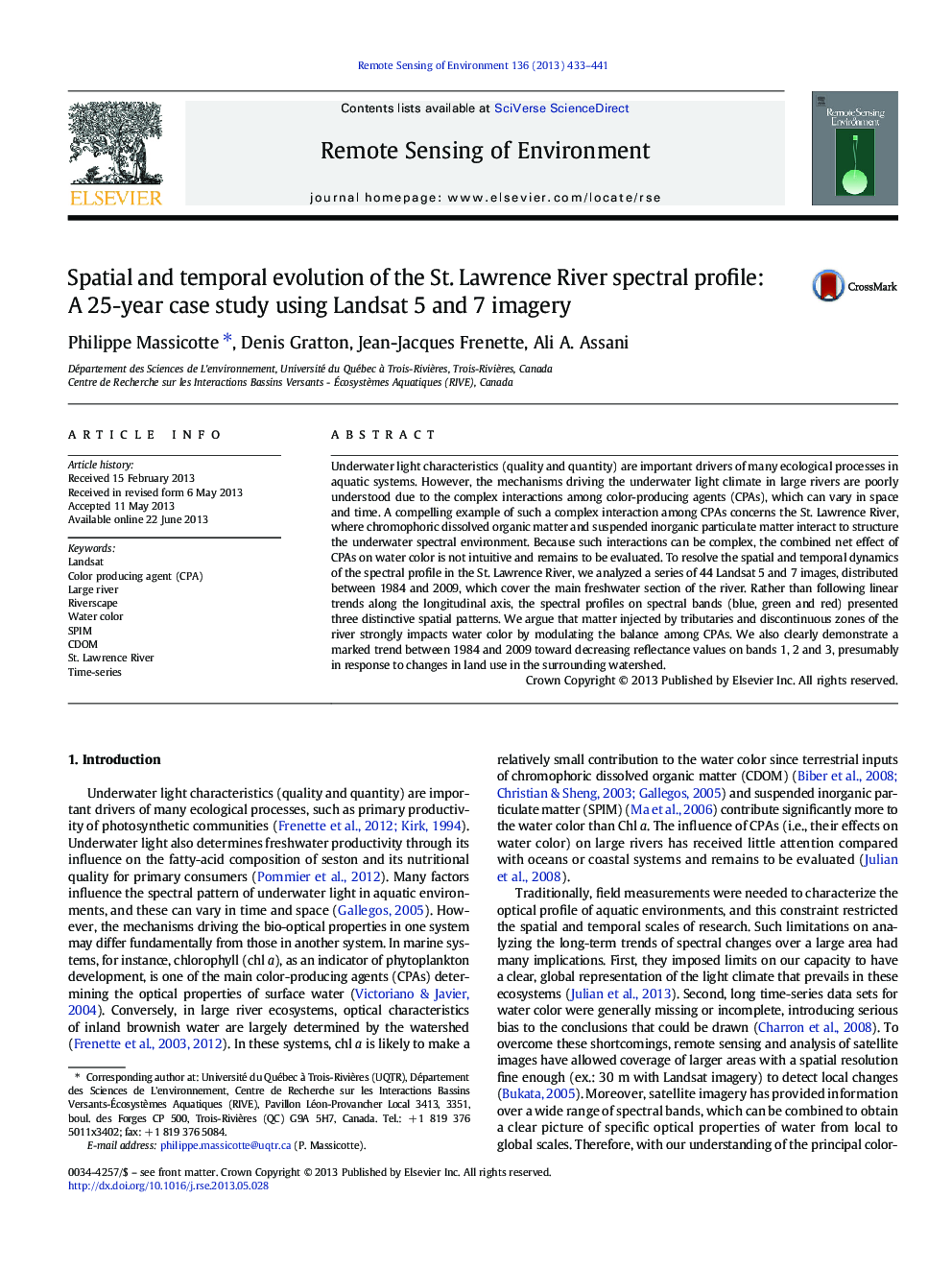| Article ID | Journal | Published Year | Pages | File Type |
|---|---|---|---|---|
| 6347439 | Remote Sensing of Environment | 2013 | 9 Pages |
Abstract
Underwater light characteristics (quality and quantity) are important drivers of many ecological processes in aquatic systems. However, the mechanisms driving the underwater light climate in large rivers are poorly understood due to the complex interactions among color-producing agents (CPAs), which can vary in space and time. A compelling example of such a complex interaction among CPAs concerns the St. Lawrence River, where chromophoric dissolved organic matter and suspended inorganic particulate matter interact to structure the underwater spectral environment. Because such interactions can be complex, the combined net effect of CPAs on water color is not intuitive and remains to be evaluated. To resolve the spatial and temporal dynamics of the spectral profile in the St. Lawrence River, we analyzed a series of 44 Landsat 5 and 7 images, distributed between 1984 and 2009, which cover the main freshwater section of the river. Rather than following linear trends along the longitudinal axis, the spectral profiles on spectral bands (blue, green and red) presented three distinctive spatial patterns. We argue that matter injected by tributaries and discontinuous zones of the river strongly impacts water color by modulating the balance among CPAs. We also clearly demonstrate a marked trend between 1984 and 2009 toward decreasing reflectance values on bands 1, 2 and 3, presumably in response to changes in land use in the surrounding watershed.
Related Topics
Physical Sciences and Engineering
Earth and Planetary Sciences
Computers in Earth Sciences
Authors
Philippe Massicotte, Denis Gratton, Jean-Jacques Frenette, Ali A. Assani,
